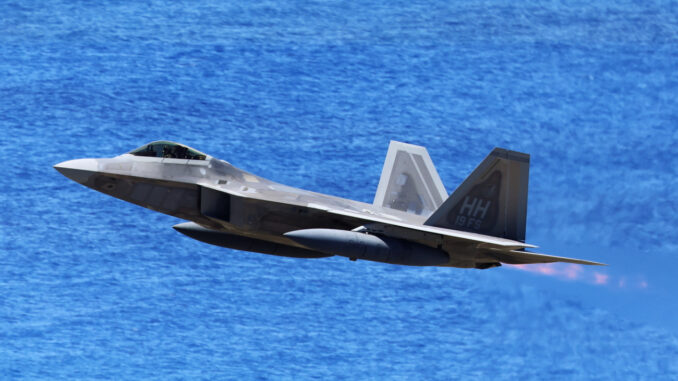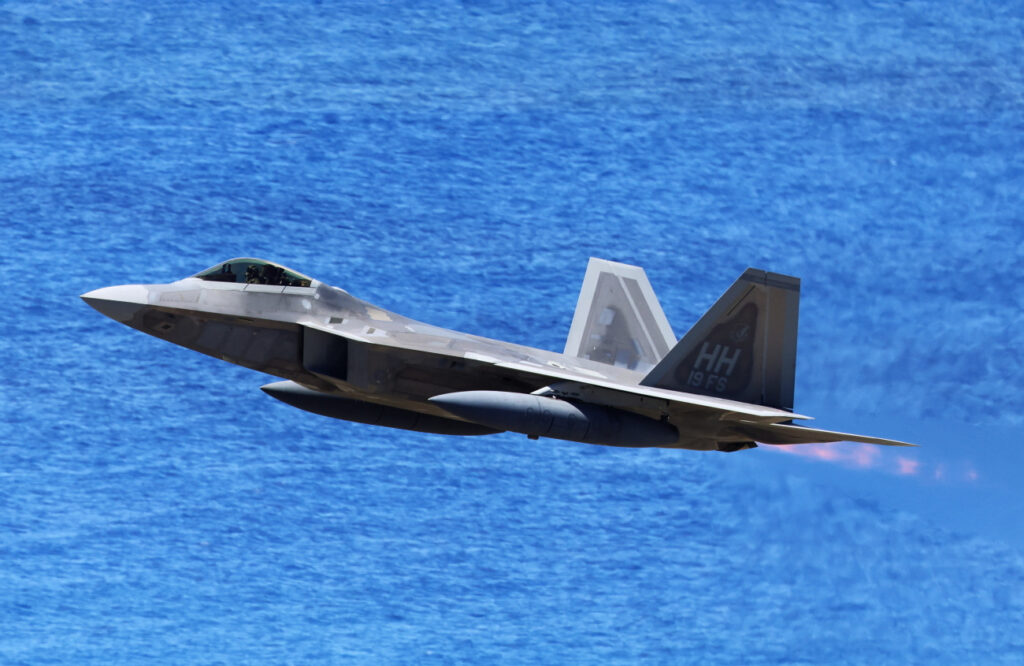
The Air Force and Navy are training together in F-22 and F-35 simulators at NAWCAD, strengthening collaboration and combat readiness.
Starting in 2024, Navy and Air Force fighter pilots will train together at the Naval Air Warfare Center Aircraft Division (NAWCAD) in a Joint Simulation Environment (JSE). This initiative will integrate F-22 and F-35 simulators, enhancing inter-service collaboration and combat readiness. The JSE’s advanced technology enables realistic virtual war scenarios, increasing training effectiveness and better preparing pilots for real combat situations.
Background and objectives of the initiative
Beginning in 2024, Navy and Air Force fighter pilots will begin joint training at the Naval Air Warfare Center Aircraft Division (NAWCAD) in Patuxent River, Maryland. This initiative aims to strengthen collaboration and combat readiness by integrating various fifth-generation fighter simulators into a unified training framework. NAWCAD enhanced its simulation capabilities by adding four Air Force F-22 Raptor cockpit simulators to its existing division of eight F-35 Lightning II simulators.
Technological advances and simulation capabilities
NAWCAD’s Joint Simulation Environment (JSE) is equipped with state-of-the-art technology, including dome simulators with 4K projectors and authentic fighter aircraft software. This configuration allows pilots to experience near-real virtual war scenarios, maximising the effectiveness of their training. The JSE allows tactical groups to conduct more sorties in a week than they would in a year on traditional open-air training grounds. This is crucial for refining combat tactics and improving operational readiness.
Inter-service collaboration and benefits
The integration of the F-22 and F-35 simulators into the JSE marks a significant step forward in joint training for the US armed forces. This unified approach allows pilots from different services to train together, learn from each other and improve their tactical proficiency. The JSE provides a secure environment where pilots can train under realistic combat conditions without the safety limitations inherent in open-air training areas. This inter-service collaboration is essential to create a task force capable of responding effectively to modern air combat challenges.
Capability development and expansion
The JSE, developed in collaboration with Navy engineers and industry partners, uses actual DoD fighter aircraft hardware and software, creating an adaptable and scalable training platform. Mission debriefing rooms are included in this facility, allowing pilots to receive critical feedback on their performance and engage in a continuous learning cycle. Initially designed to support operational testing of the F-35 Lightning, the JSE has expanded to include a wider range of platforms, including the F-22 Raptor.

Strategic and industrial implications
This initiative reflects the DoD’s commitment to promoting joint operational capability across all military domains. By training in a hyper-realistic environment, pilots develop critical skills to deter aggression and succeed in combat. In addition, the JSE programme strengthens the US defence industrial base, stimulating the development and production of advanced simulation and training technologies.
Future prospects and wider integration
Over the next year, NAWCAD plans to integrate other test and training cockpits, including those for the F/A-18 Hornet, EA-18 Growler and E-2. In addition, the JSE will be deployed aboard the aircraft carrier USS Abraham Lincoln (CVN 72), enhancing the Navy’s shipboard training capabilities. This expansion demonstrates the growing importance of advanced simulation technologies in modern training programmes, such as TOPGUN.
Air force integration
The integration of the F-22 and F-35 simulators into NAWCAD’s Joint Simulation Environment represents a major step forward in joint training for the US armed forces. By recreating the complexities of modern combat in a controlled, hyper-realistic environment, the JSE ensures that pilots from different services can train together, improve their skills and enhance their combat readiness. This initiative not only strengthens the United States’ deterrence capability but also its military supremacy by providing advanced and collaborative training opportunities.
War Wings Daily is an independant magazine.